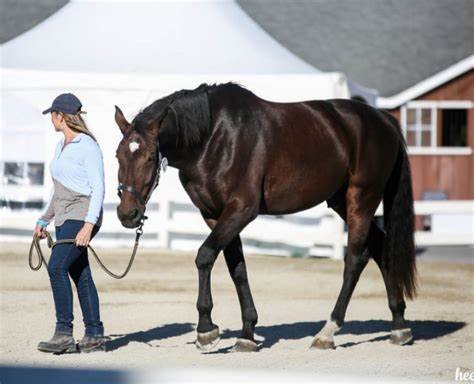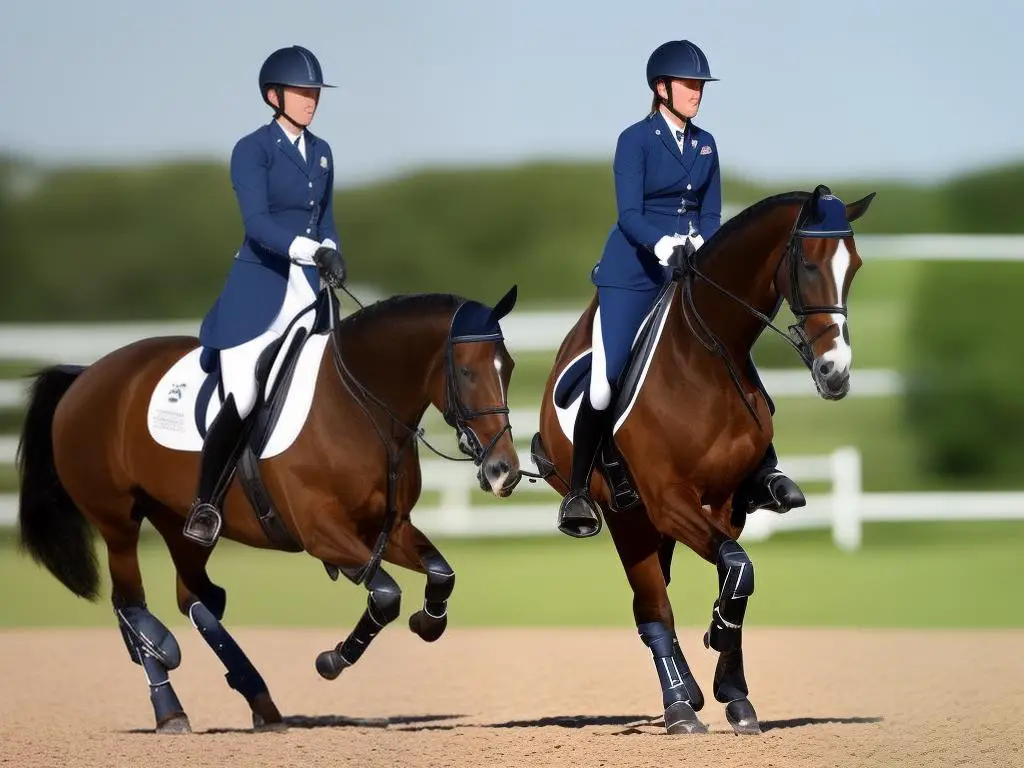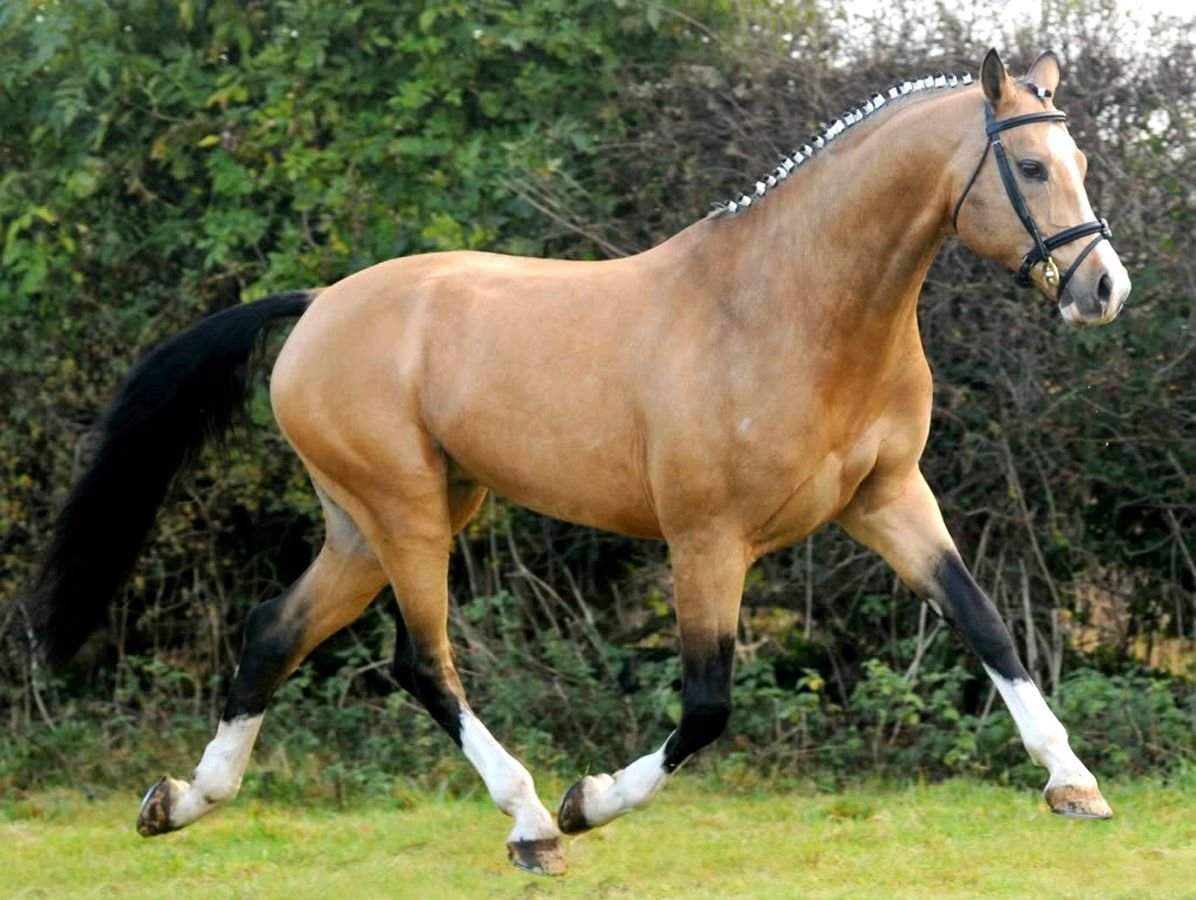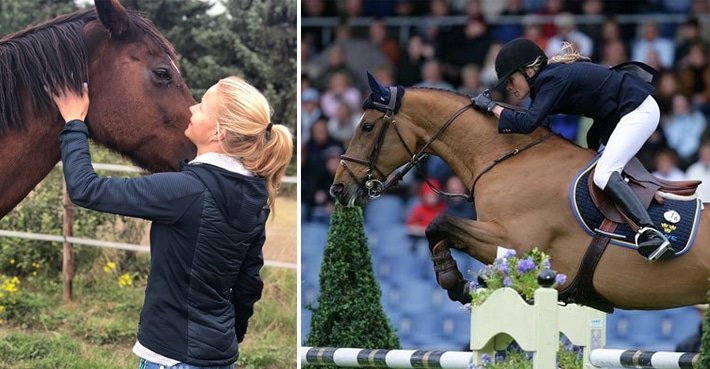When it comes to choosing the right horse for various equestrian disciplines, two breeds often come up: Warmbloods and Thoroughbreds. Both are versatile, athletic, and widely used in competitive sports, but they have distinct characteristics that make them better suited for different types of riders and activities. In this guide, we will compare the two breeds in terms of temperament, performance, and ideal uses to help you determine which might be the best fit for your needs.
1. Temperament
Warmbloods: Known for their calm and willing nature, Warmbloods are often described as having a steady temperament. They are intelligent, easy to train, and responsive to their rider’s cues. These horses are often more laid-back and forgiving, making them ideal for riders who want a reliable partner for disciplines that require precision and patience, such as dressage and show jumping.
Thoroughbreds: Thoroughbreds, on the other hand, tend to have a more energetic and spirited temperament. Originally bred for racing, they are highly sensitive, responsive, and can be more excitable than Warmbloods. While they are intelligent and quick learners, they may not always be as patient or forgiving, which can make them better suited to experienced riders who have the skills to channel their energy effectively.
2. Physical Build
Warmbloods: Generally larger and more muscular, Warmbloods are built for strength and endurance. They tend to have a more robust frame, which makes them well-suited for disciplines like dressage, eventing, and show jumping, where strength and power are important.
Thoroughbreds: Thoroughbreds are typically lighter, leaner, and more athletic in appearance. They are known for their speed and stamina, with long legs and a lighter frame that enables them to run fast. While they may not have the raw strength of a Warmblood, their agility and quickness make them well-suited for activities like racing and other performance sports that require speed.
3. Ideal Uses
Warmbloods: With their balanced temperament and versatile physical build, Warmbloods excel in disciplines that require strength, agility, and careful training. They are highly popular in dressage, show jumping, and eventing. Their calm demeanor and cooperative nature also make them great for riders looking for a steady and reliable mount for long training sessions or competitions.
Thoroughbreds: Thoroughbreds are ideal for disciplines that emphasize speed, stamina, and athleticism. They are well-suited for racing, show jumping, and eventing where agility and fast responses are needed. They are also commonly used in fox hunting and polo, where their energy and stamina are put to good use. Thoroughbreds are also a good fit for riders seeking high-performance horses with the drive and speed for intense competition.
4. Training and Care
Warmbloods: These horses are typically easier to train for the average rider, thanks to their calm nature and desire to please. They respond well to structured training and benefit from clear guidance. Warmbloods also tend to have fewer health issues compared to Thoroughbreds, making them easier to manage and maintain in the long run.
Thoroughbreds: Training a Thoroughbred may require more patience and skill, especially for less experienced riders. Their high energy and sensitivity can make them more challenging to handle, requiring consistent leadership and clear communication. In terms of health, Thoroughbreds can be more prone to injuries due to their higher stress levels and intense training needs, especially if not managed carefully.
5. Rider Experience
Warmbloods: Ideal for riders of all levels, from beginners to advanced, due to their calm demeanor and trainable nature. These horses tend to be forgiving, making them a great option for riders who are learning or those who prefer a more reliable and less demanding mount.
Thoroughbreds: Best suited for experienced riders who can manage their high energy and sensitivity. While they are responsive and intelligent, their spirited nature means they may be less forgiving of mistakes and require a more skilled hand to guide them effectively.

6. Cost and Availability
Warmbloods: Generally, Warmbloods are more expensive due to their desirable qualities in competitive disciplines like dressage and show jumping. They are often bred for specific purposes, making them a bit pricier. However, they are widely available and can be found across the world in both competitive and recreational settings.
Thoroughbreds: While Thoroughbreds can also be expensive, particularly those with racing backgrounds, they are often available at lower prices after their racing careers end. Many Thoroughbreds are rehomed for second careers in disciplines like eventing or show jumping, making them a great option for riders looking for a high-performance horse at a more affordable price.
Which Is Best for You?
- Warmbloods are ideal for riders looking for a calm, reliable, and versatile horse for disciplines such as dressage, show jumping, or eventing. They are great for those who want a horse with a strong work ethic, a forgiving nature, and the ability to handle extended training sessions.
- Thoroughbreds are best for riders seeking a spirited, athletic horse with the drive for high-performance sports. If you’re interested in racing, show jumping, or eventing at a competitive level, and you have experience handling a more energetic and sensitive horse, a Thoroughbred may be the right choice for you.
Ultimately, the right choice depends on your riding goals, skill level, and the type of competition or activity you plan to pursue. Both Warmbloods and Thoroughbreds offer unique qualities that make them outstanding partners in different equestrian endeavors.











